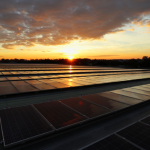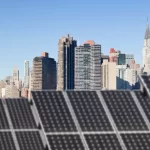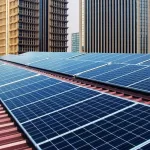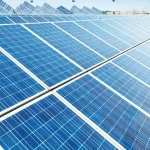
If you’ve been considering solar panels, you know that this technology is a clean, eco-friendly way to power your home and heat your water. New York Governor Andrew M. Cuomo sure knows it, and he’s pushing a $1 billion initiative to advance the adoption of solar energy in Rockland and Orange County and across the state.
Solar grew by 300% between 2011 and 2014, twice as fast as the US solar growth rate. You may want to join the ranks, but the upfront investment may seem daunting. Thankfully, New York State solar incentives make the purchase more affordable than you might think. Take a look at all the incentives you could qualify for.
Residential Solar Tax Credit
- What’s included: The single biggest way to reduce your solar investment is to apply for the New York State solar tax credit. This covers 25% of the cost of equipment and installation up to $5,000.
- How to qualify: Solar arrays up to 25 kilowatts (kW) qualify if they are grid tied and net metered. Installations purchased outright, leased or bought with a purchase power agreement (PPA) all qualify. Installations used for pool heating or other recreational applications don’t qualify. You also can’t claim the tax credit if the solar panels were paid for by a non-taxable grant.
- Other details: This tax credit currently has no expiration date.
New York State Energy Research and Development Authority (NYSERDA) Incentives
- What’s included: Through the NY Sun Incentive Program, NYSERDA is offering cash incentives for solar installations with a budget of $762 million. Incentive rates will drop as time goes by, but as of April 2015, the rate for Rockland County is $0.70 per watt.
- How to qualify: Commercial, residential, industrial, institutional and other sectors can apply for incentives. To claim the incentives, you solar array must be 25 kW or less and tied to the grid. It must also be installed by a pre-approved contractor and comply with all standards and safety codes.
- Other details: The program launched in 2014 with the goal of supporting 3.175 gigawatts (GW) by 2023. Incentives decrease as the expiration date approaches.
Solar Sales Tax Exemption
- What’s included: When you buy anything in New York, your purchase is usually subject to sales tax. However, this incentive makes your solar panel purchase 100% exempt from state sales tax. Solar lease payments and the sale of electricity generated by solar arrays are exempt from state sales and use tax as well.
- How to qualify: Both residential and non-residential systems qualify. Installations used for residential recreational facilities, such as a backyard pool, do not qualify, but commercial pool heating does qualify.
- Other details: The sales tax exemption was enacted in 2005 and currently has no expiration date.
Property Tax Exemption
- What’s included: When you add solar panels to your home, its value increases. Normally, this increases your property taxes as well. These New York State solar incentives makes sure your property taxes don’t rise for the next 15 years as a result of your home’s increased value from adding solar panels.
- How to qualify: Residences ranging from single-family to four-family dwellings qualify. Other energy-conservation home improvements qualify as well, including solar water heaters, wind, biomass and geothermal heat pumps.
- Other details: This incentive has been in place since 1977 and has no expiration date.
Net Metering
- What’s included: Net metering is when you sell back excess electricity generated by your solar array. You are credited for the excess energy on your next bill at the retail electricity rate.
- How to qualify: Many renewable energy sources qualify for net metering, including solar, wind, fuel cells and micro turbines. Sectors ranging from residential and commercial to industrial and nonprofit may qualify for net metering. The system capacity limit for residential solar is 25 kW.
- Other details: Utilities are not required to offer net metering, but Long Island Power Authority is one provider that chooses to. It’s a great way for the utility to offer electricity generated from a clean source.
Federal Tax Incentives
- What’s included: In addition to state incentives, you can also apply for federal tax credits, which are the federal government’s way of encouraging homeowners across the country to embrace solar energy. To help fund the switch, you can apply for this federal tax credit, which covers 30% of the cost with no upper limit.
- How to qualify: Both existing homes and new construction qualify for the tax incentive, but you must own your home. You can also qualify whether you’re putting solar panels on a primary or secondary residence, such as a vacation home.
- Other details: The incentive expires December 31, 2016. All solar arrays installed after this date can’t qualify.
Feeling overwhelmed by the number of potential New York State solar incentives? Then work with an installer who can apply on your behalf.




